Table of Contents
Copyright
Preface
Chapter 1. Introduction
Section 1.1. Introduction
Section 1.2. Source Code Presentation
Section 1.3. History
Section 1.4. Application Programming Interfaces
Section 1.5. Example Program
Section 1.6. System Calls and Library Functions
Section 1.7. Network Implementation Overview
Section 1.8. Descriptors
Section 1.9. Mbufs (Memory Buffers) and Output Processing
Section 1.10. Input Processing
Section 1.11. Network Implementation Overview Revisited
Section 1.12. Interrupt Levels and Concurrency
Section 1.13. Source Code Organization
Section 1.14. Test Network
Section 1.15. Summary
Chapter 2. Mbufs: Memory Buffers
Section 2.1. Introduction
Section 2.2. Code Introduction
Section 2.3. Mbuf Definitions
Section 2.4. mbuf Structure
Section 2.5. Simple Mbuf Macros and Functions
Section 2.6. m_devget and m_pullup Functions
Section 2.7. Summary of Mbuf Macros and Functions
Section 2.8. Summary of Net/3 Networking Data Structures
Section 2.9. m_copy and Cluster Reference Counts
Section 2.10. Alternatives
Section 2.11. Summary
Chapter 3. Interface Layer
Section 3.1. Introduction
Section 3.2. Code Introduction
Section 3.3. ifnet Structure
Section 3.4. ifaddr Structure
Section 3.5. sockaddr Structure
Section 3.6. ifnet and ifaddr Specialization
Section 3.7. Network Initialization Overview
Section 3.8. Ethernet Initialization
Section 3.9. SLIP Initialization
Section 3.10. Loopback Initialization
Section 3.11. if_attach Function
Section 3.12. ifinit Function
Section 3.13 Summary
Chapter 4. Interfaces: Ethernet
Section 4.1. Introduction
Section 4.2. Code Introduction
Section 4.3. Ethernet Interface
Section 4.4. ioctl System Call
Section 4.5. Summary
Chapter 5. Interfaces: SLIP and Loopback
Section 5.1. Introduction
Section 5.2. Code Introduction
Section 5.3. SLIP Interface
Section 5.4. Loopback Interface
Section 5.5. Summary
Chapter 6. IP Addressing
Section 6.1. Introduction
Section 6.2. Code Introduction
Section 6.3. Interface and Address Summary
Section 6.4. sockaddr_in Structure
Section 6.5. in_ifaddr Structure
Section 6.6. Address Assignment
Section 6.7. Interface ioctl Processing
Section 6.8. Internet Utility Functions
Section 6.9. ifnet Utility Functions
Section 6.10. Summary
Chapter 7. Domains and Protocols
Section 7.1. Introduction
Section 7.2. Code Introduction
Section 7.3. domain Structure
Section 7.4. protosw Structure
Section 7.5. IP domain and protosw Structures
Section 7.6. pffindproto and pffindtype Functions
Section 7.7. pfctlinput Function
Section 7.8. IP Initialization
Section 7.9. sysctl System Call
Section 7.10. Summary
Chapter 8. IP: Internet Protocol
Section 8.1. Introduction
Section 8.2. Code Introduction
Section 8.3. IP Packets
Section 8.4. Input Processing: ipintr Function
Section 8.5. Forwarding: ip_forward Function
Section 8.6. Output Processing: ip_output Function
Section 8.7. Internet Checksum: in_cksum Function
Section 8.8. setsockopt and getsockopt System Calls
Section 8.9. ip_sysctl Function
Section 8.10. Summary
Chapter 9. IP Option Processing
Section 9.1. Introduction
Section 9.2. Code Introduction
Section 9.3. Option Format
Section 9.4. ip_dooptions Function
Section 9.5. Record Route Option
Section 9.6. Source and Record Route Options
Section 9.7. Timestamp Option
Section 9.8. ip_insertoptions Function
Section 9.9. ip_pcbopts Function
Section 9.10. Limitations
Section 9.11. Summary
Chapter 10. IP Fragmentation and Reassembly
Section 10.1. Introduction
Section 10.2. Code Introduction
Section 10.3. Fragmentation
Section 10.4. ip_optcopy Function
Section 10.5. Reassembly
Section 10.6. ip_reass Function
Section 10.7. ip_slowtimo Function
Section 10.8. Summary
Chapter 11. ICMP: Internet Control Message Protocol
Section 11.1. Introduction
Section 11.2. Code Introduction
Section 11.3. icmp Structure
Section 11.4. ICMP protosw Structure
Section 11.5. Input Processing: icmp_input Function
Section 11.6. Error Processing
Section 11.7. Request Processing
Section 11.8. Redirect Processing
Section 11.9. Reply Processing
Section 11.10. Output Processing
Section 11.11. icmp_error Function
Section 11.12. icmp_reflect Function
Section 11.13. icmp_send Function
Section 11.14. icmp_sysctl Function
Section 11.15. Summary
Chapter 12. IP Multicasting
Section 12.1. Introduction
Section 12.2. Code Introduction
Section 12.3. Ethernet Multicast Addresses
Section 12.4. ether_multi Structure
Section 12.5. Ethernet Multicast Reception
Section 12.6. in_multi Structure
Section 12.7. ip_moptions Structure
Section 12.8. Multicast Socket Options
Section 12.9. Multicast TTL Values
Section 12.10. ip_setmoptions Function
Section 12.11. Joining an IP Multicast Group
Section 12.12. Leaving an IP Multicast Group
Section 12.13. ip_getmoptions Function
Section 12.14. Multicast Input Processing: ipintr Function
Section 12.15. Multicast Output Processing: ip_output Function
Section 12.16. Performance Considerations
Section 12.17. Summary
Chapter 13. IGMP: Internet Group Management Protocol
Section 13.1. Introduction
Section 13.2. Code Introduction
Section 13.3. igmp Structure
Section 13.4. IGMP protosw Structure
Section 13.5. Joining a Group: igmp_joingroup Function
Section 13.6. igmp_fasttimo Function
Section 13.7. Input Processing: igmp_input Function
Section 13.8. Leaving a Group: igmp_leavegroup Function
Section 13.9. Summary
Chapter 14. IP Multicast Routing
Section 14.1. Introduction
Section 14.2. Code Introduction
Section 14.3. Multicast Output Processing Revisited
Section 14.4. mrouted Daemon
Section 14.5. Virtual Interfaces
Section 14.6. IGMP Revisited
Section 14.7. Multicast Routing
Section 14.8. Multicast Forwarding: ip_mforward Function
Section 14.9. Cleanup: ip_mrouter_done Function
Section 14.10. Summary
Chapter 15. Socket Layer
Section 15.1. Introduction
Section 15.2. Code Introduction
Section 15.3. socket Structure
Section 15.4. System Calls
Section 15.5. Processes, Descriptors, and Sockets
Section 15.6. socket System Call
Section 15.7. getsock and sockargs Functions
Section 15.8. bind System Call
Section 15.9. listen System Call
Section 15.10. tsleep and wakeup Functions
Section 15.11. accept System Call
Section 15.12. sonewconn and soisconnected Functions
Section 15.13. connect System call
Section 15.14. shutdown System Call
Section 15.15. close System Call
Section 15.16. Summary
Chapter 16. Socket I/O
Section 16.1. Introduction
Section 16.2. Code Introduction
Section 16.3. Socket Buffers
Section 16.4. write, writev, sendto, and sendmsg System Calls
Section 16.5. sendmsg System Call
Section 16.6. sendit Function
Section 16.7. sosend Function
Section 16.8. read, readv, recvfrom, and recvmsg System Calls
Section 16.9. recvmsg System Call
Section 16.10. recvit Function
Section 16.11. soreceive Function
Section 16.12. soreceive Code
Section 16.13. select System Call
Section 16.14. Summary
Chapter 17. Socket Options
Section 17.1. Introduction
Section 17.2. Code Introduction
Section 17.3. setsockopt System Call
Section 17.4. getsockopt System Call
Section 17.5. fcntl and ioctl System Calls
Section 17.6. getsockname System Call
Section 17.7. getpeername System Call
Section 17.8. Summary
Chapter 18. Radix Tree Routing Tables
Section 18.1. Introduction
Section 18.2. Routing Table Structure
Section 18.3. Routing Sockets
Section 18.4. Code Introduction
Section 18.5. Radix Node Data Structures
Section 18.6. Routing Structures
Section 18.7. Initialization: route_init and rtable_init Functions
Section 18.8. Initialization: rn_init and rn_inithead Functions
Section 18.9. Duplicate Keys and Mask Lists
Section 18.10. rn_match Function
Section 18.11. rn_search Function
Section 18.12. Summary
Chapter 19. Routing Requests and Routing Messages
Section 19.1. Introduction
Section 19.2. rtalloc and rtalloc1 Functions
Section 19.3. RTFREE Macro and rtfree Function
Section 19.4. rtrequest Function
Section 19.5. rt_setgate Function
Section 19.6. rtinit Function
Section 19.7. rtredirect Function
Section 19.8. Routing Message Structures
Section 19.9. rt_missmsg Function
Section 19.10. rt_ifmsg Function
Section 19.11. rt_newaddrmsg Function
Section 19.12. rt_msg1 Function
Section 19.13. rt_msg2 Function
Section 19.14. sysctl_rtable Function
Section 19.15. sysctl_dumpentry Function
Section 19.16. sysctl_iflist Function
Section 19.17. Summary
Chapter 20. Routing Sockets
Section 20.1. Introduction
Section 20.2. routedomain and protosw Structures
Section 20.3. Routing Control Blocks
Section 20.4. raw_init Function
Section 20.5. route_output Function
Section 20.6. rt_xaddrs Function
Section 20.7. rt_setmetrics Function
Section 20.8. raw_input Function
Section 20.9. route_usrreq Function
Section 20.10. raw_usrreq Function
Section 20.11. raw_attach, raw_detach, and raw_disconnect Functions
Section 20.12. Summary
Chapter 21. ARP: Address Resolution Protocol
Section 21.1. Introduction
Section 21.2. ARP and the Routing Table
Section 21.3. Code Introduction
Section 21.4. ARP Structures
Section 21.5. arpwhohas Function
Section 21.6. arprequest Function
Section 21.7. arpintr Function
Section 21.8. in_arpinput Function
Section 21.9. ARP Timer Functions
Section 21.10. arpresolve Function
Section 21.11. arplookup Function
Section 21.12. Proxy ARP
Section 21.13. arp_rtrequest Function
Section 21.14. ARP and Multicasting
Section 21.15. Summary
Chapter 22. Protocol Control Blocks
Section 22.1. Introduction
Section 22.2. Code Introduction
Section 22.3. inpcb Structure
Section 22.4. in_pcballoc and in_pcbdetach Functions
Section 22.5. Binding, Connecting, and Demultiplexing
Section 22.6. in_pcblookup Function
Section 22.7. in_pcbbind Function
Section 22.8. in_pcbconnect Function
Section 22.9. in_pcbdisconnect Function
Section 22.10. in_setsockaddr and in_setpeeraddr Functions
Section 22.11. in_pcbnotify, in_rtchange, and in_losing Functions
Section 22.12. Implementation Refinements
Section 22.13. Summary
Chapter 23. UDP: User Datagram Protocol
Section 23.1. Introduction
Section 23.2. Code Introduction
Section 23.3. UDP protosw Structure
Section 23.4. UDP Header
Section 23.5. udp_init Function
Section 23.6. udp_output Function
Section 23.7. udp_input Function
Section 23.8. udp_saveopt Function
Section 23.9. udp_ctlinput Function
Section 23.10. udp_usrreq Function
Section 23.11. udp_sysctl Function
Section 23.12. Implementation Refinements
Section 23.13. Summary
Chapter 24. TCP: Transmission Control Protocol
Section 24.1. Introduction
Section 24.2. Code Introduction
Section 24.3. TCP protosw Structure
Section 24.4. TCP Header
Section 24.5. TCP Control Block
Section 24.6. TCP State Transition Diagram
Section 24.7. TCP Sequence Numbers
Section 24.8. tcp_init Function
Section 24.9. Summary
Chapter 25. TCP Timers
Section 25.1. Introduction
Section 25.2. Code Introduction
Section 25.3. tcp_canceltimers Function
Section 25.4. tcp_fasttimo Function
Section 25.5. tcp_slowtimo Function
Section 25.6. tcp_timers Function
Section 25.7. Retransmission Timer Calculations
Section 25.8. tcp_newtcpcb Function
Section 25.9. tcp_setpersist Function
Section 25.10. tcp_xmit_timer Function
Section 25.11. Retransmission Timeout: tcp_timers Function
Section 25.12. An RTT Example
Section 25.13. Summary
Chapter 26. TCP Output
Section 26.1. Introduction
Section 26.2. tcp_output Overview
Section 26.3. Determine if a Segment Should be Sent
Section 26.4. TCP Options
Section 26.5. Window Scale Option
Section 26.6. Timestamp Option
Section 26.7. Send a Segment
Section 26.8. tcp_template Function
Section 26.9. tcp_respond Function
Section 26.10. Summary
Chapter 27. TCP Functions
Section 27.1. Introduction
Section 27.2. tcp_drain Function
Section 27.3. tcp_drop Function
Section 27.4. tcp_close Function
Section 27.5. tcp_mss Function
Section 27.6. tcp_ctlinput Function
Section 27.7. tcp_notify Function
Section 27.8. tcp_quench Function
Section 27.9. TCP_REASS Macro and tcp_reass Function
Section 27.10. tcp_trace Function
Section 27.11. Summary
Chapter 28. TCP Input
Section 28.1. Introduction
Section 28.2. Preliminary Processing
Section 28.3. tcp_dooptions Function
Section 28.4. Header Prediction
Section 28.5. TCP Input: Slow Path Processing
Section 28.6. Initiation of Passive Open, Completion of Active Open
Section 28.7. PAWS: Protection Against Wrapped Sequence Numbers
Section 28.8. Trim Segment so Data is Within Window
Section 28.9. Self-Connects and Simultaneous Opens
Section 28.10. Record Timestamp
Section 28.11. RST Processing
Section 28.12. Summary
Chapter 29. TCP Input (Continued)
Section 29.1. Introduction
Section 29.2. ACK Processing Overview
Section 29.3. Completion of Passive Opens and Simultaneous Opens
Section 29.4. Fast Retransmit and Fast Recovery Algorithms
Section 29.5. ACK Processing
Section 29.6. Update Window Information
Section 29.7. Urgent Mode Processing
Section 29.8. tcp_pulloutofband Function
Section 29.9. Processing of Received Data
Section 29.10. FIN Processing
Section 29.11. Final Processing
Section 29.12. Implementation Refinements
Section 29.13. Header Compression
Section 29.14. Summary
Chapter 30. TCP User Requests
Section 30.1. Introduction
Section 30.2. tcp_usrreq Function
Section 30.3. tcp_attach Function
Section 30.4. tcp_disconnect Function
Section 30.5. tcp_usrclosed Function
Section 30.6. tcp_ctloutput Function
Section 30.7. Summary
Chapter 31. BPF: BSD Packet Filter
Section 31.1. Introduction
Section 31.2. Code Introduction
Section 31.3. bpf_if Structure
Section 31.4. bpf_d Structure
Section 31.5. BPF Input
Section 31.6. BPF Output
Section 31.7. Summary
Chapter 32. Raw IP
Section 32.1. Introduction
Section 32.2. Code Introduction
Section 32.3. Raw IP protosw Structure
Section 32.4. rip_init Function
Section 32.5. rip_input Function
Section 32.6. rip_output Function
Section 32.7. rip_usrreq Function
Section 32.8. rip_ctloutput Function
Section 32.9. Summary
Epilogue
Solutions to Selected Exercises
Chapter 1
Chapter 2
Chapter 3
Chapter 4
Chapter 5
Chapter 6
Chapter 7
Chapter 8
Chapter 9
Chapter 10
Chapter 11
Chapter 12
Chapter 13
Chapter 14
Chapter 15
Chapter 16
Chapter 17
Chapter 18
Chapter 19
Chapter 20
Chapter 21
Chapter 22
Chapter 23
Chapter 24
Chapter 25
Chapter 26
Chapter 27
Chapter 28
Chapter 29
Chapter 30
Chapter 31
Chapter 32
Source Code Availability
URLs: Uniform Resource Locators
4.4BSD-Lite
Operating Systems that Run the 4.4BSD-Lite Networking Software
RFCs
GNU Software
PPP Software
mrouted Software
ISODE Software
RFC 1122 Compliance
Section C.1. Link-Layer Requirements
Section C.2. IP Requirements
Section C.3. IP Options Requirements
Section C.4. IP Fragmentation and Reassembly Requirements
Section C.5. ICMP Requirements
Section C.6. Multicasting Requirements
Section C.7. IGMP Requirements
Section C.8. Routing Requirements
Section C.9. ARP Requirements
Section C.10. UDP Requirements
Section C.11. TCP Requirements
Bibliography
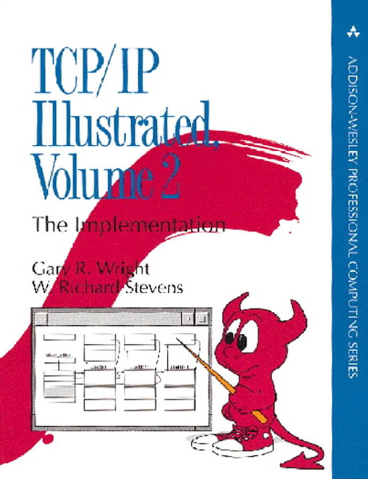
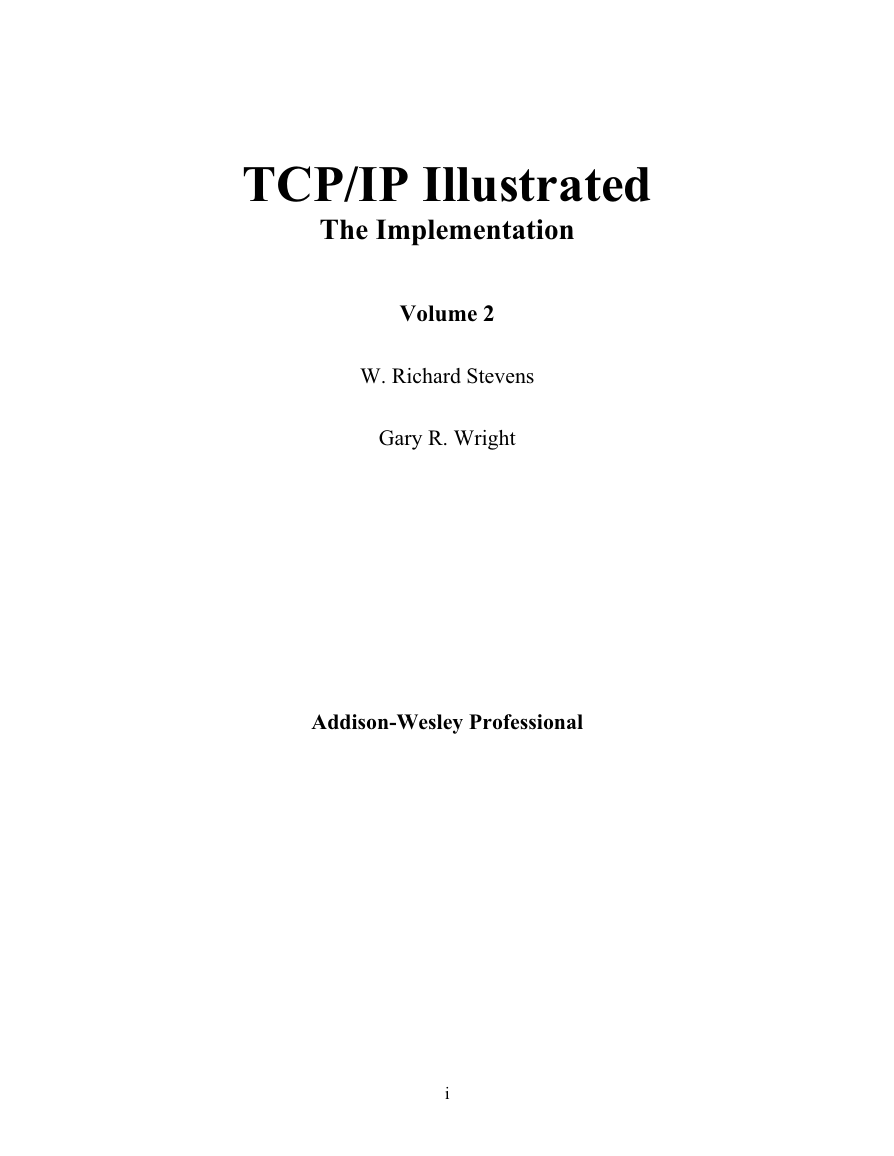

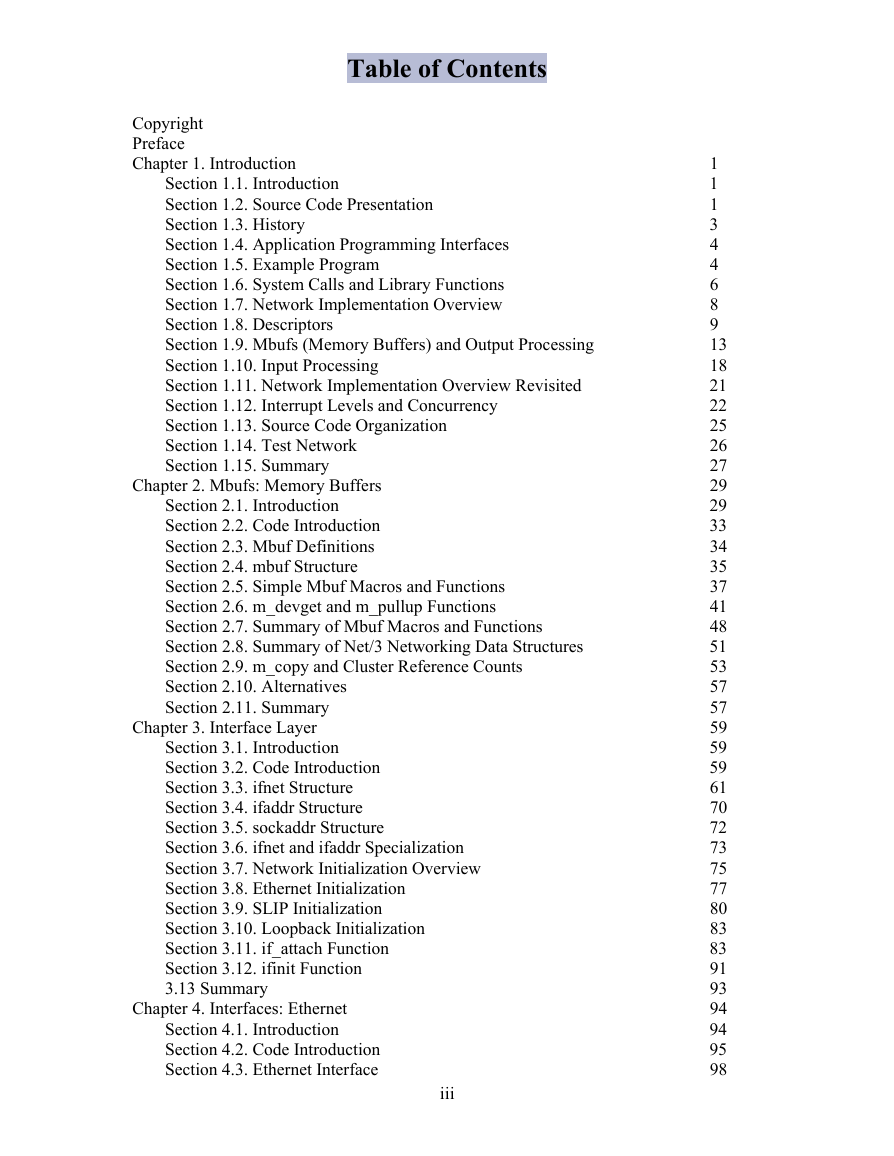
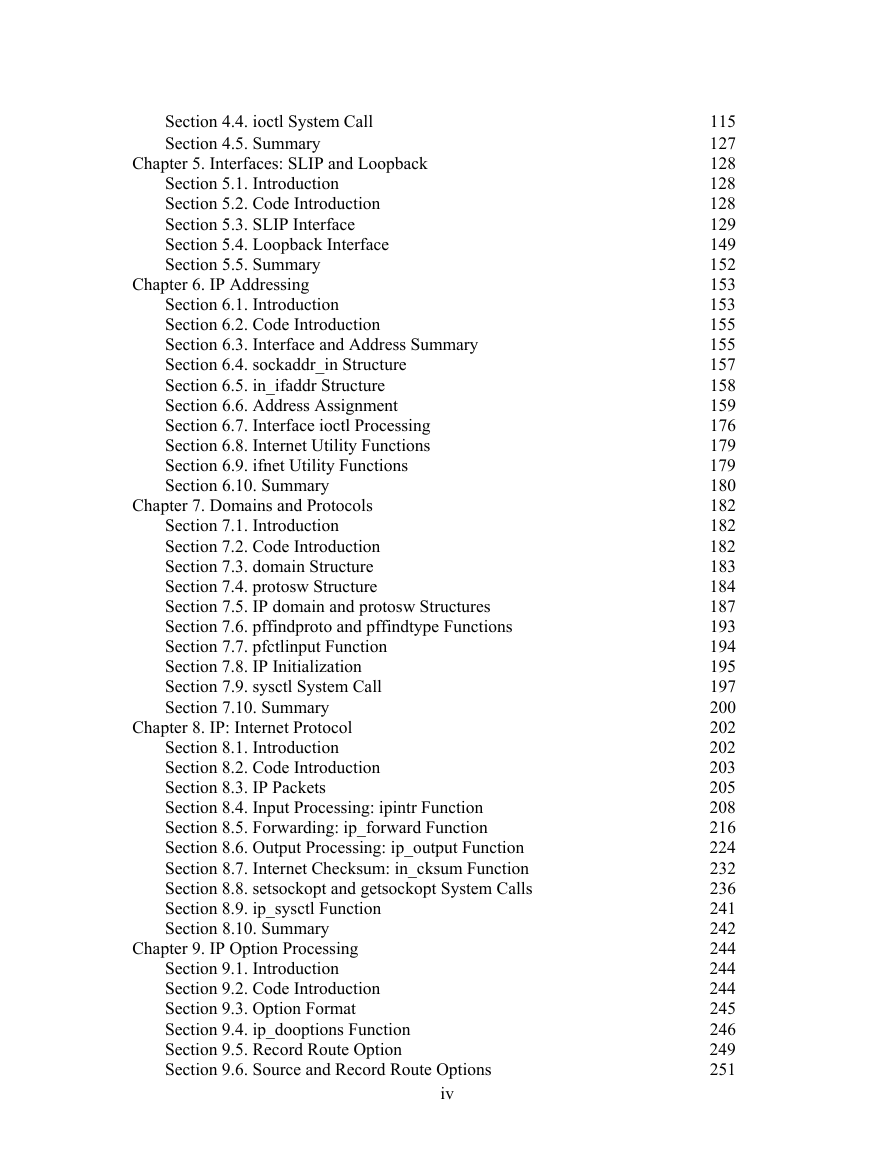
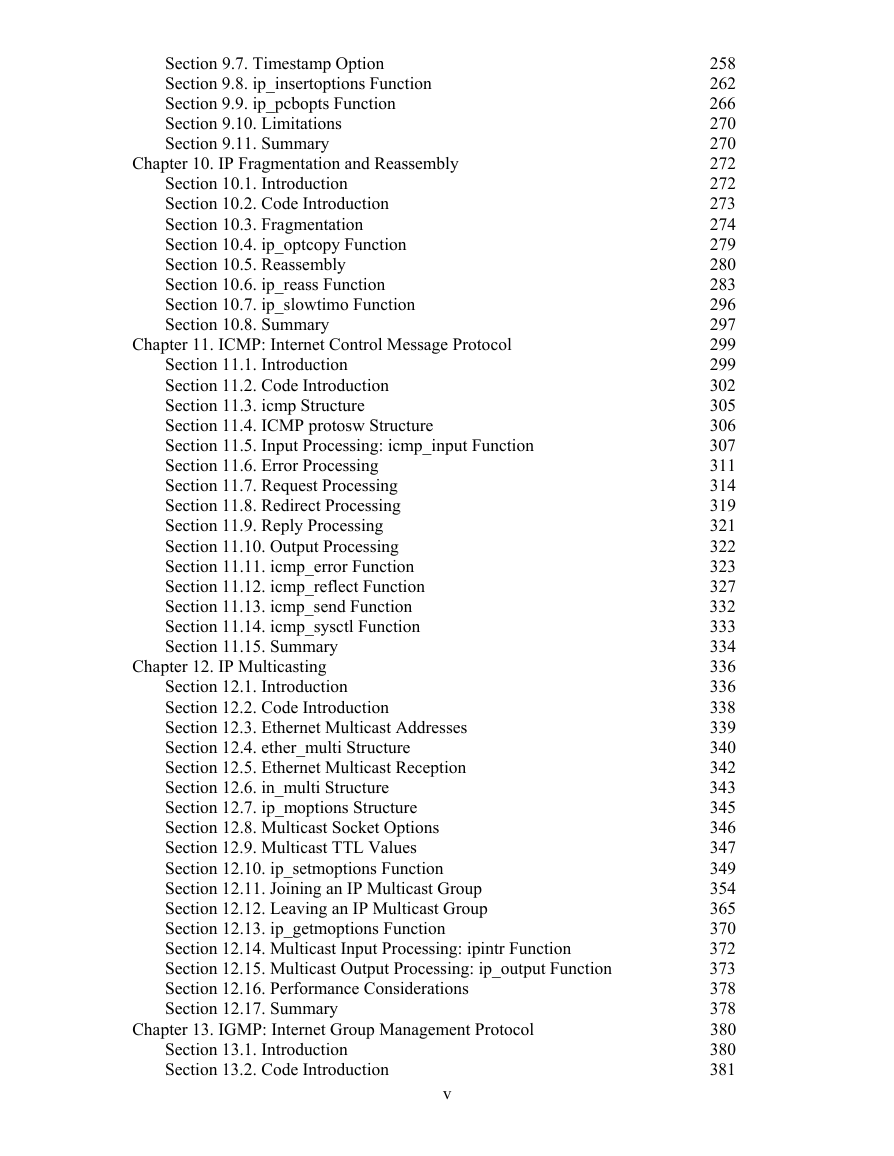
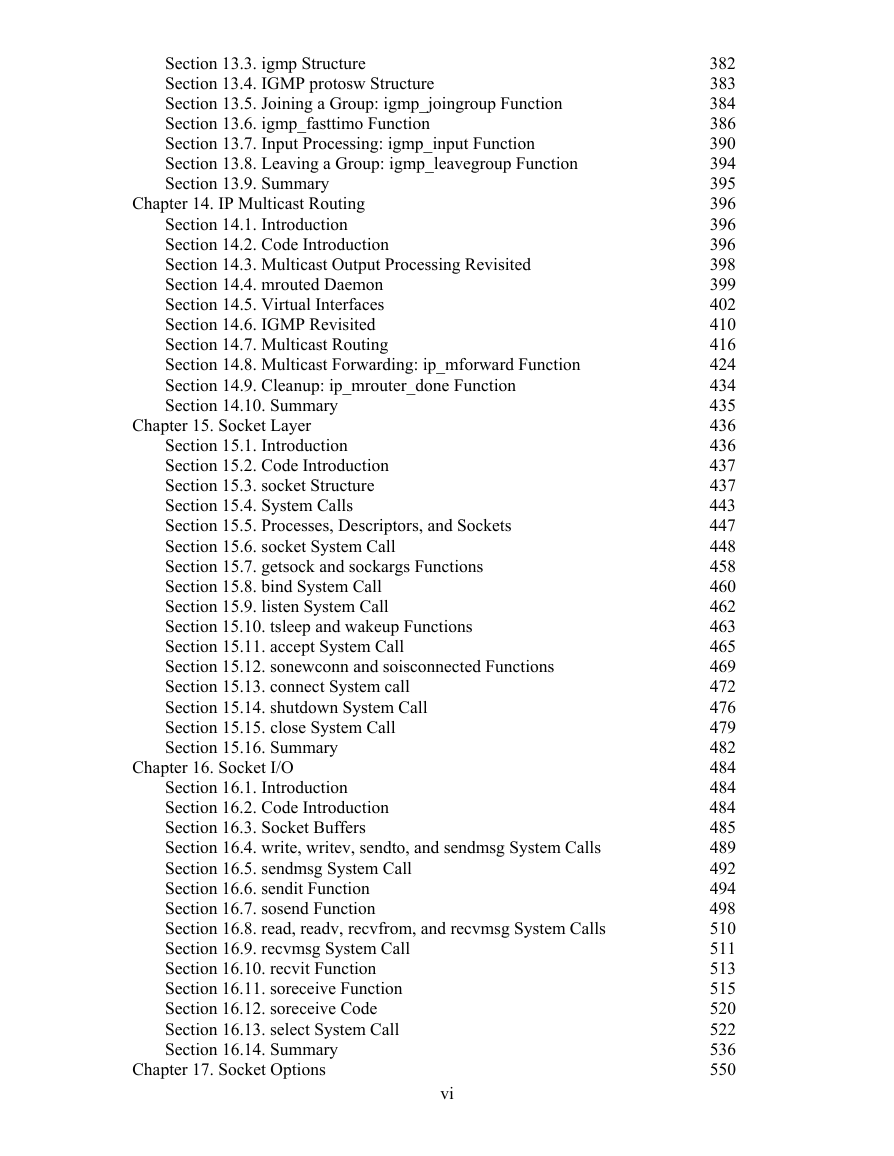
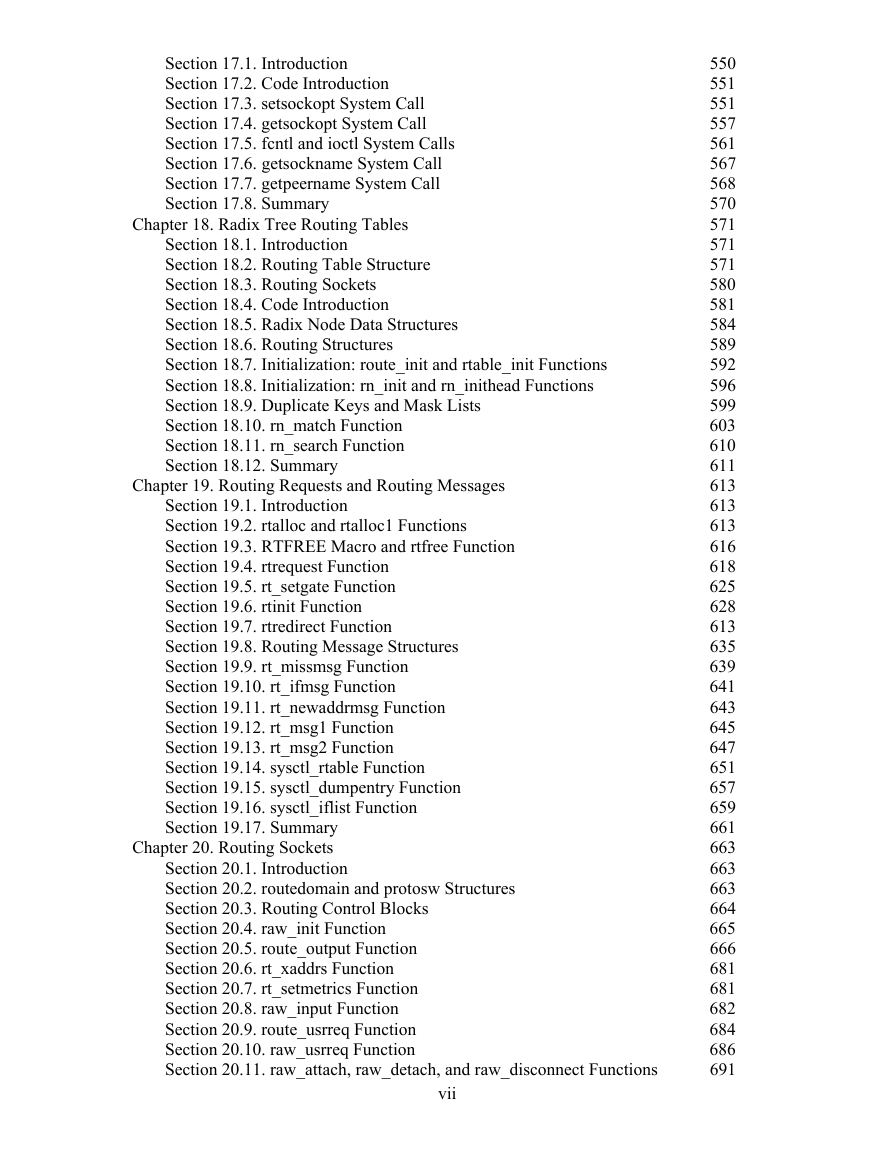








 2023年江西萍乡中考道德与法治真题及答案.doc
2023年江西萍乡中考道德与法治真题及答案.doc 2012年重庆南川中考生物真题及答案.doc
2012年重庆南川中考生物真题及答案.doc 2013年江西师范大学地理学综合及文艺理论基础考研真题.doc
2013年江西师范大学地理学综合及文艺理论基础考研真题.doc 2020年四川甘孜小升初语文真题及答案I卷.doc
2020年四川甘孜小升初语文真题及答案I卷.doc 2020年注册岩土工程师专业基础考试真题及答案.doc
2020年注册岩土工程师专业基础考试真题及答案.doc 2023-2024学年福建省厦门市九年级上学期数学月考试题及答案.doc
2023-2024学年福建省厦门市九年级上学期数学月考试题及答案.doc 2021-2022学年辽宁省沈阳市大东区九年级上学期语文期末试题及答案.doc
2021-2022学年辽宁省沈阳市大东区九年级上学期语文期末试题及答案.doc 2022-2023学年北京东城区初三第一学期物理期末试卷及答案.doc
2022-2023学年北京东城区初三第一学期物理期末试卷及答案.doc 2018上半年江西教师资格初中地理学科知识与教学能力真题及答案.doc
2018上半年江西教师资格初中地理学科知识与教学能力真题及答案.doc 2012年河北国家公务员申论考试真题及答案-省级.doc
2012年河北国家公务员申论考试真题及答案-省级.doc 2020-2021学年江苏省扬州市江都区邵樊片九年级上学期数学第一次质量检测试题及答案.doc
2020-2021学年江苏省扬州市江都区邵樊片九年级上学期数学第一次质量检测试题及答案.doc 2022下半年黑龙江教师资格证中学综合素质真题及答案.doc
2022下半年黑龙江教师资格证中学综合素质真题及答案.doc